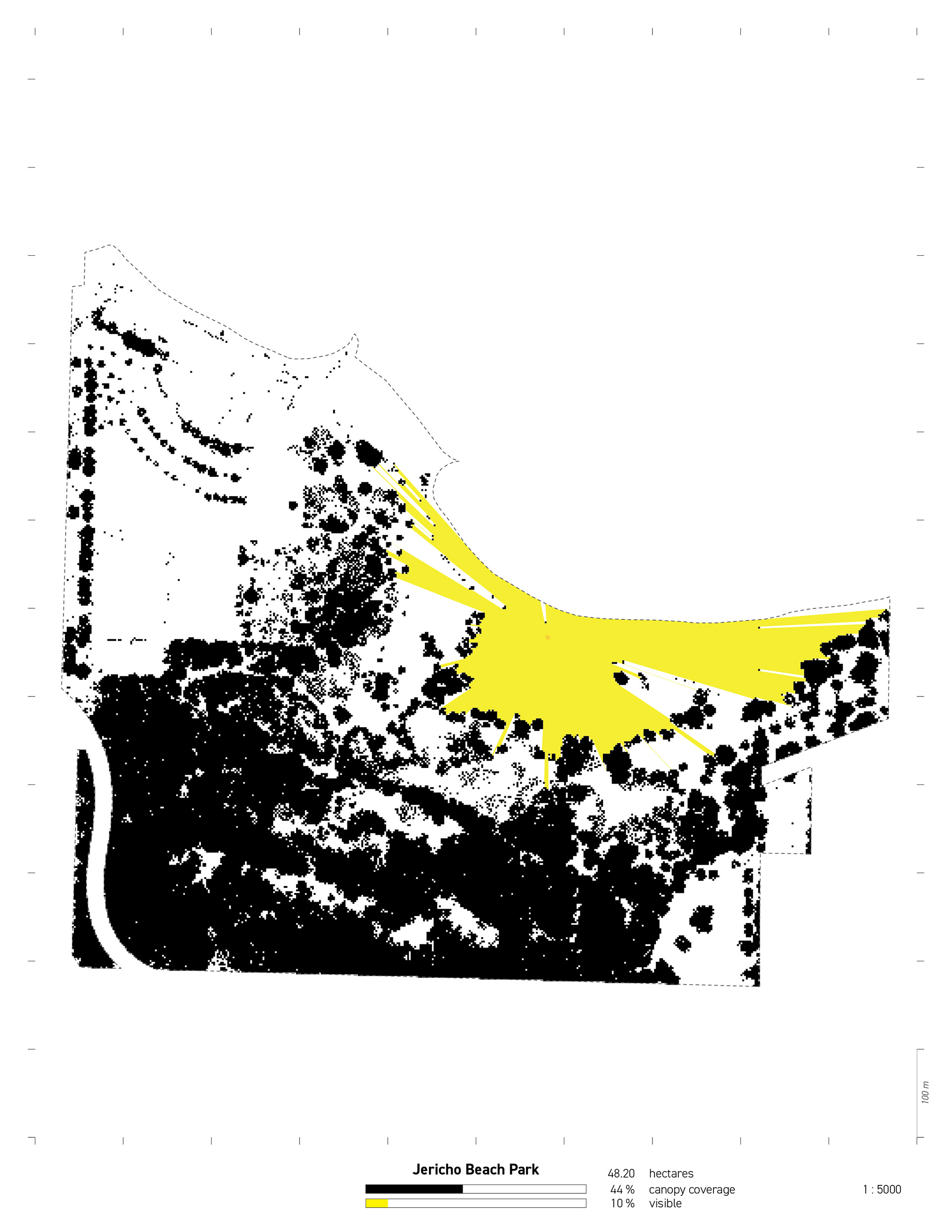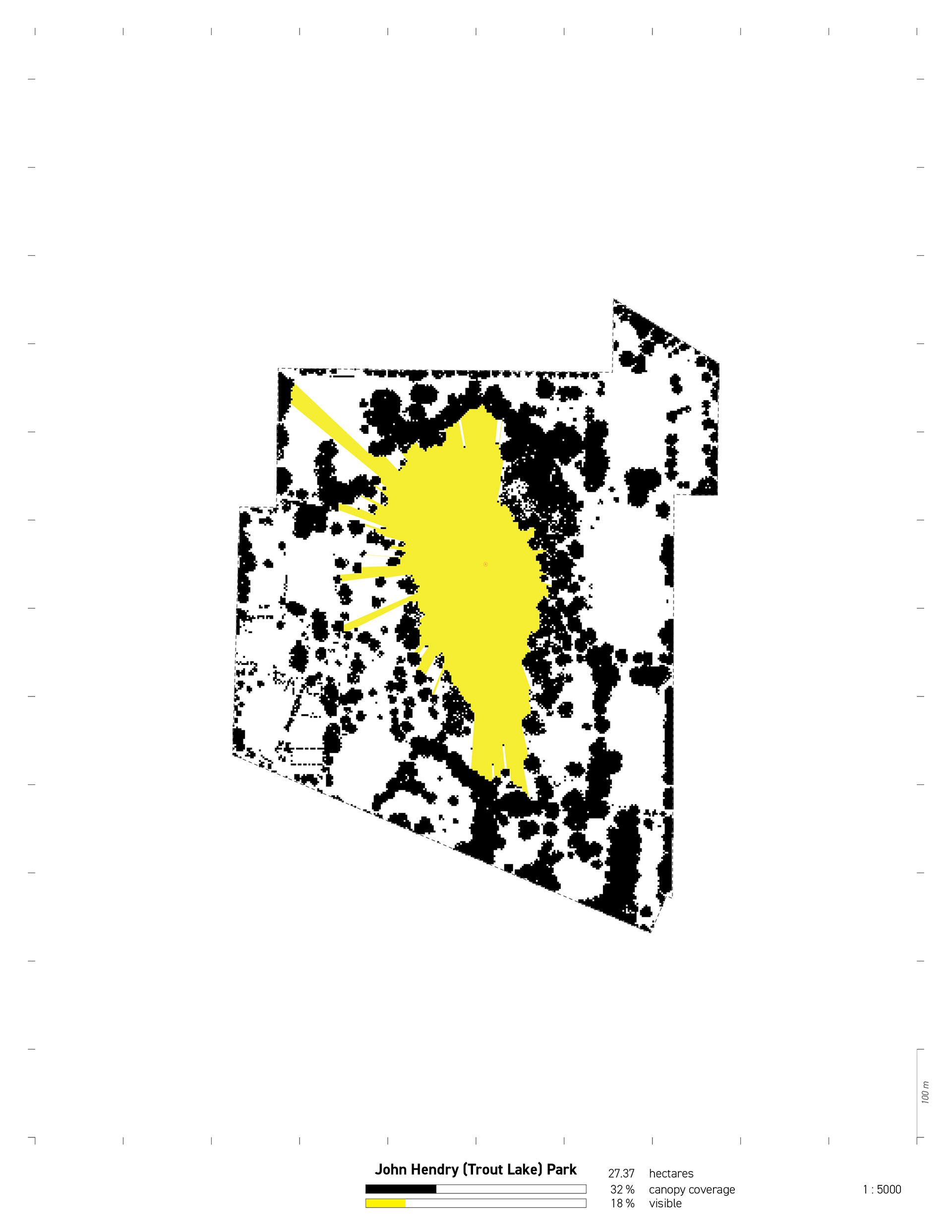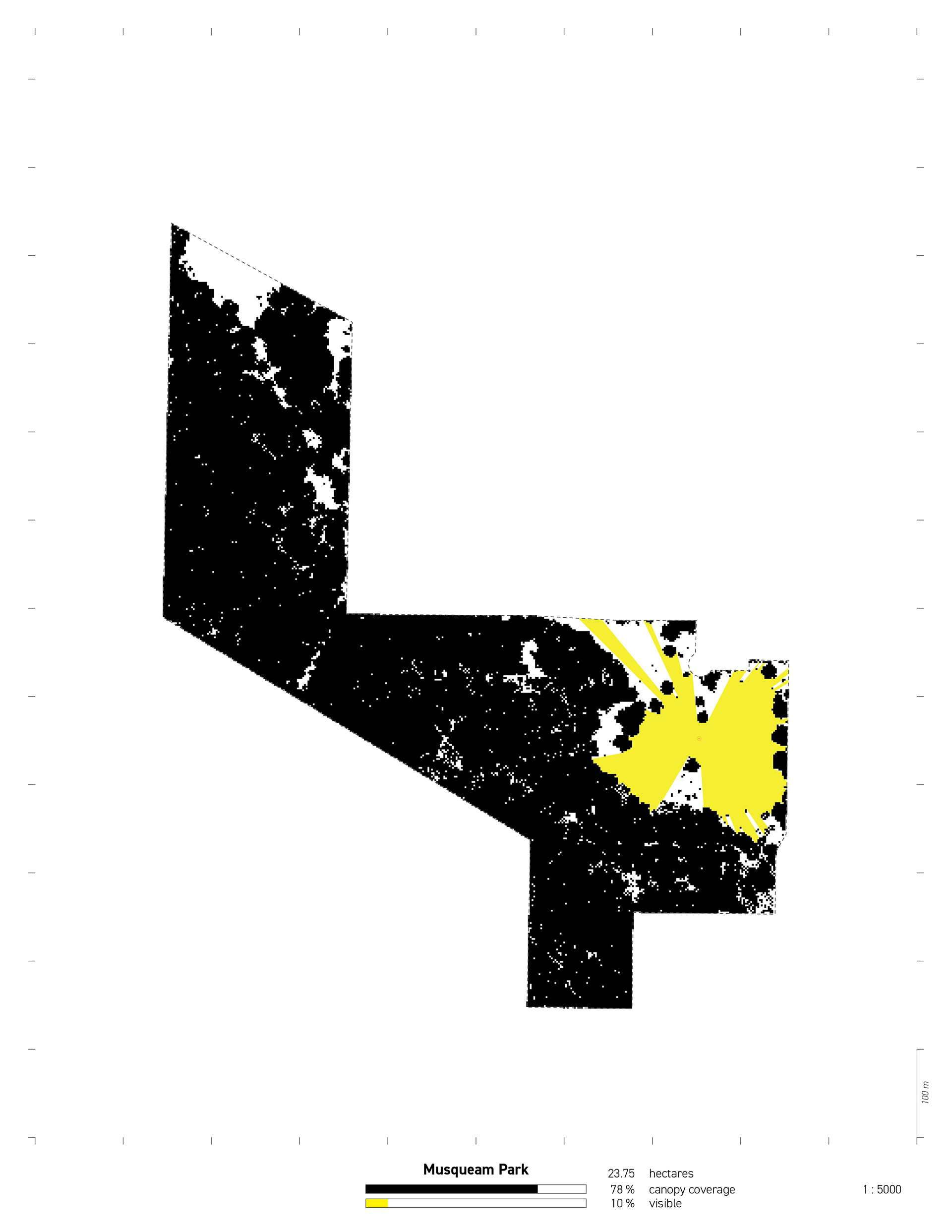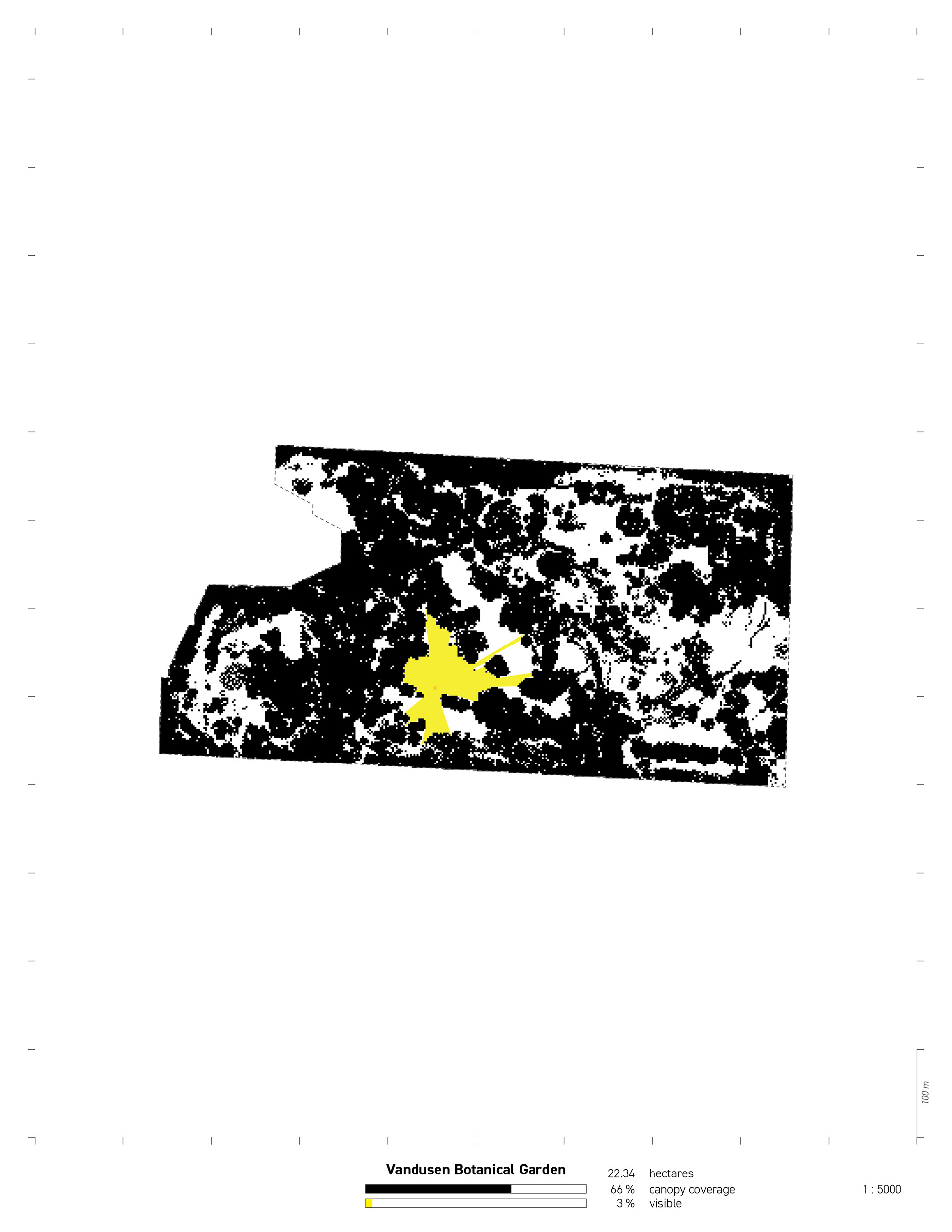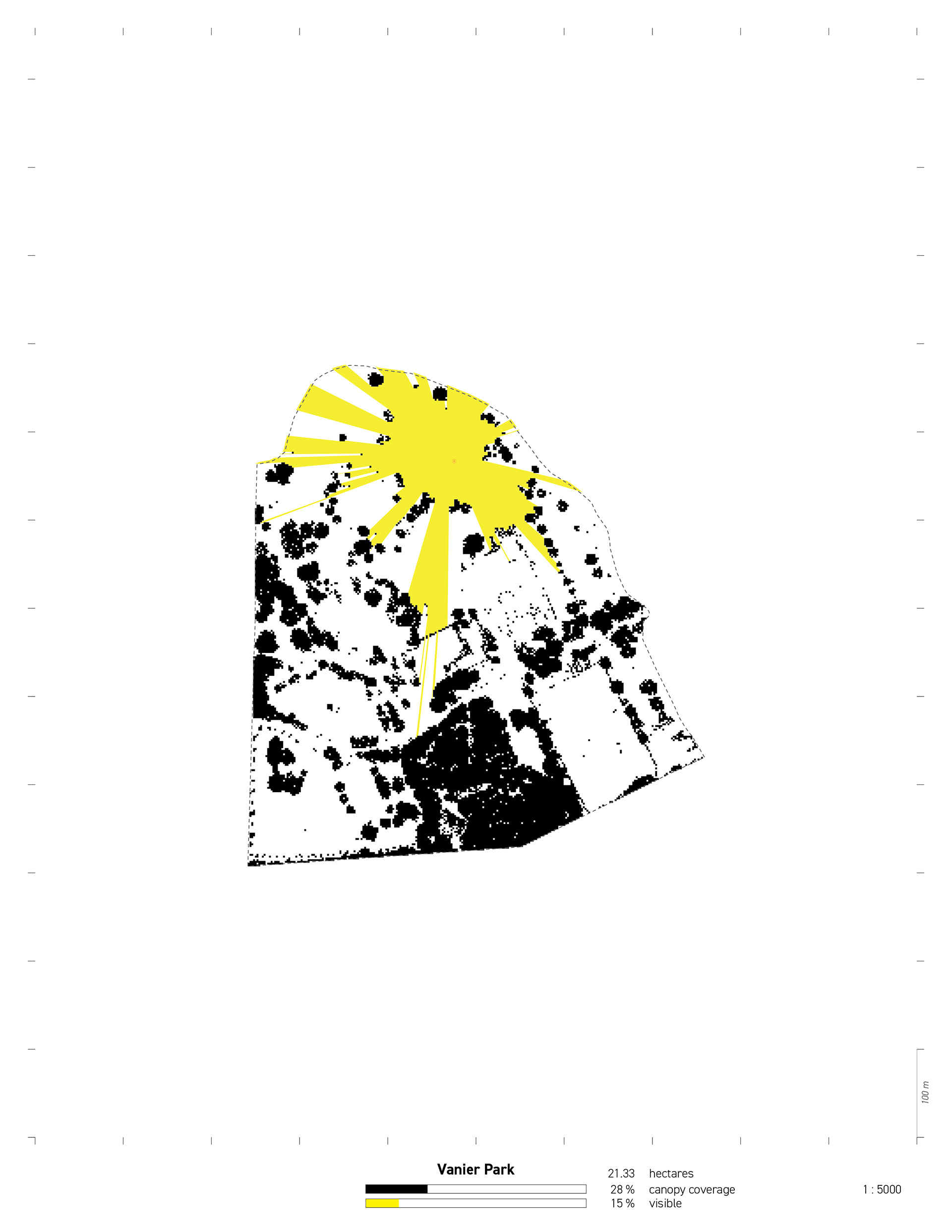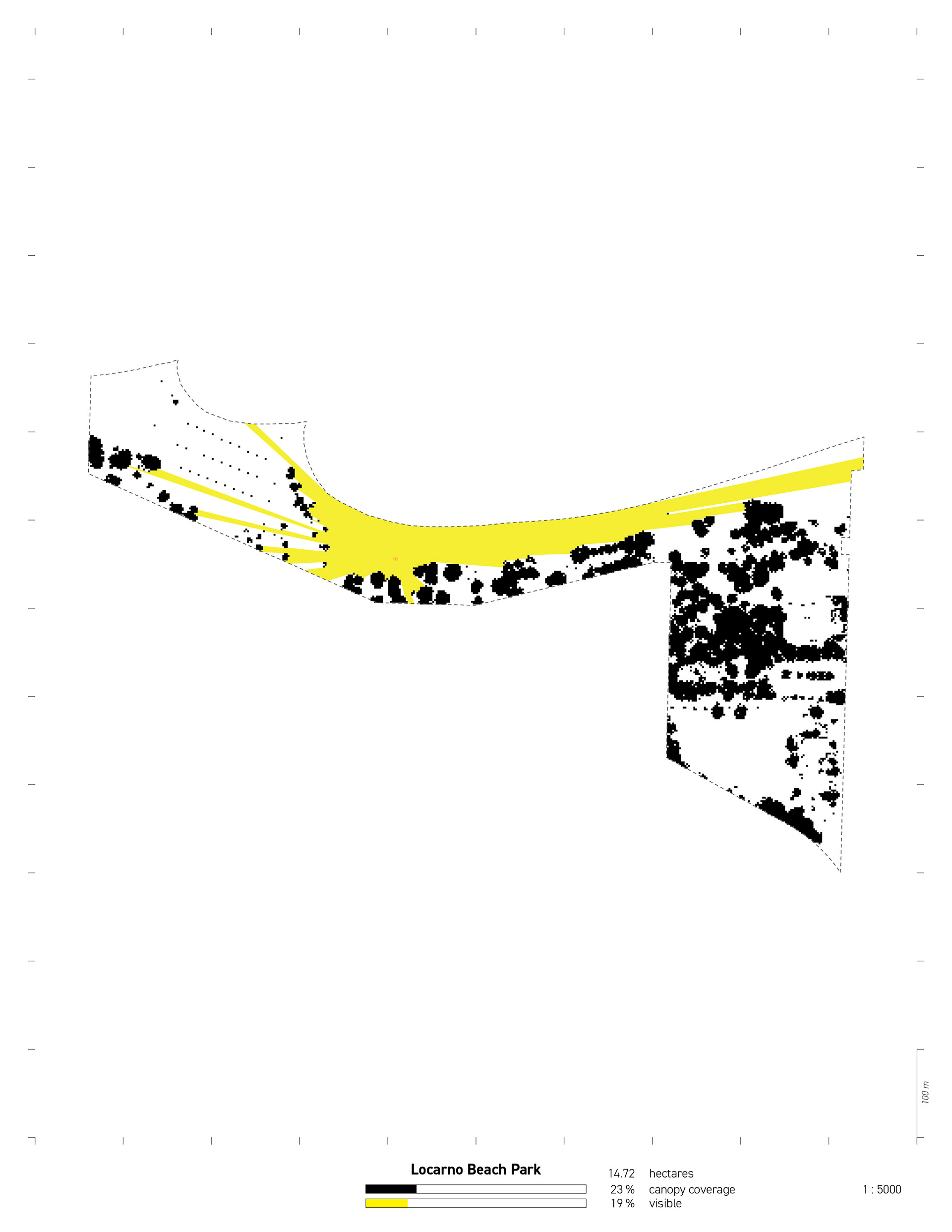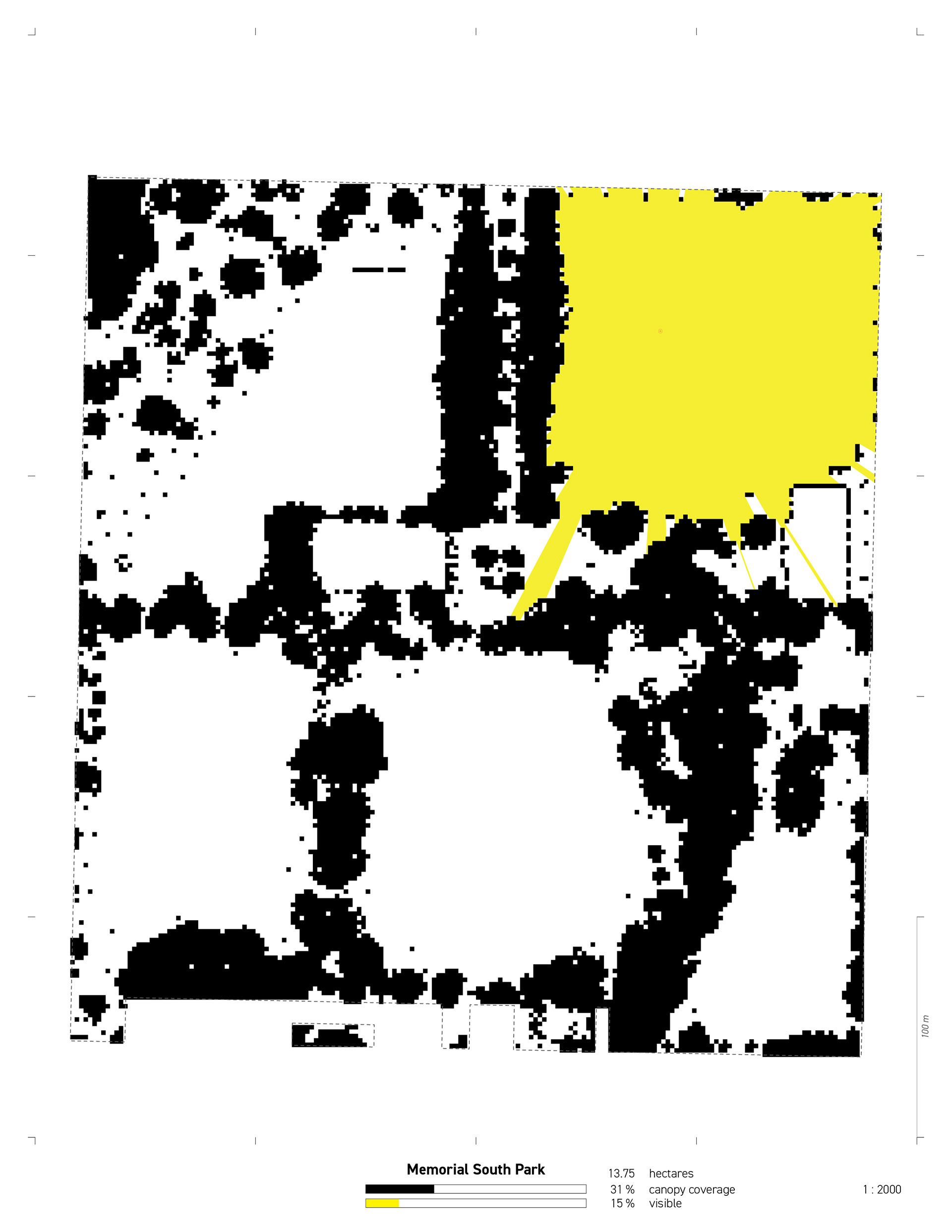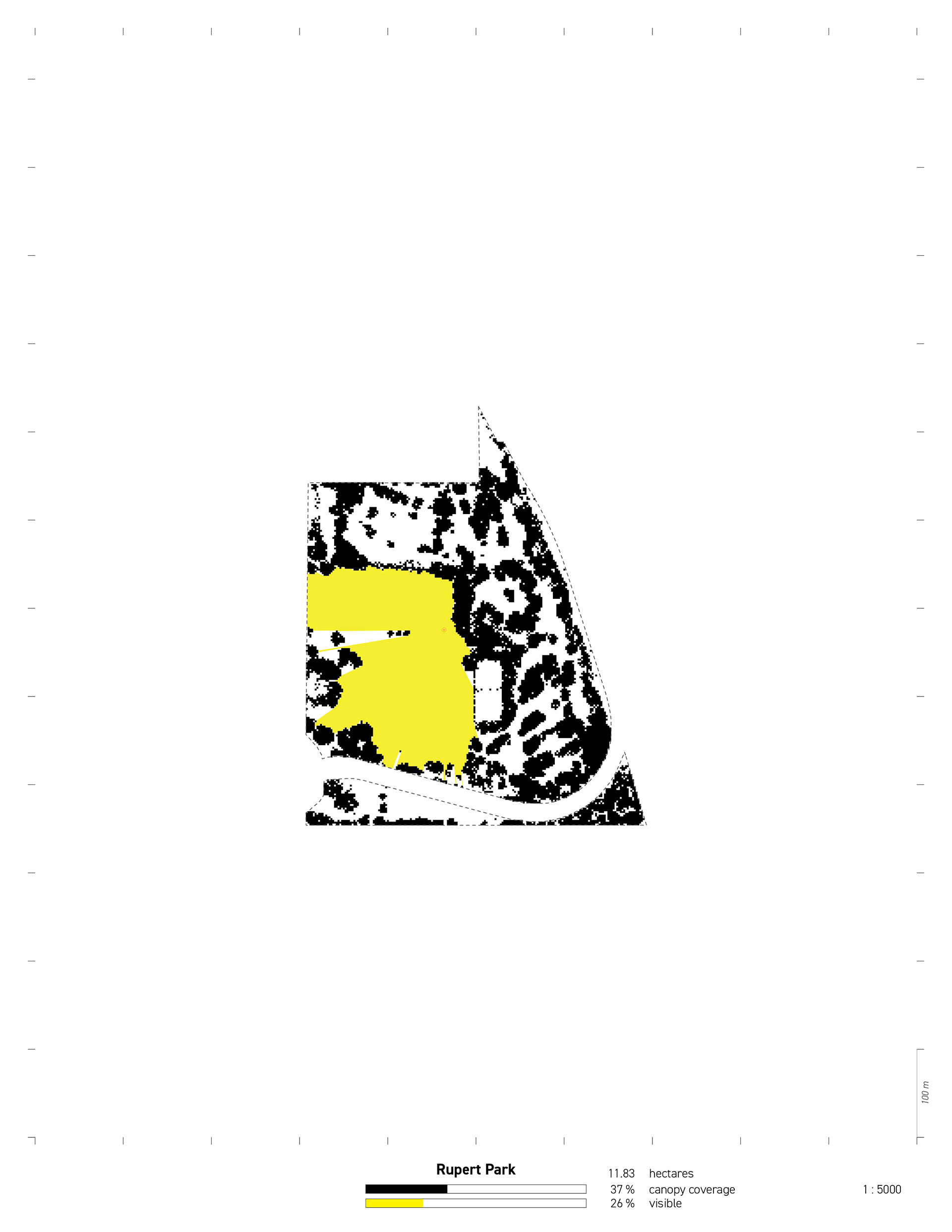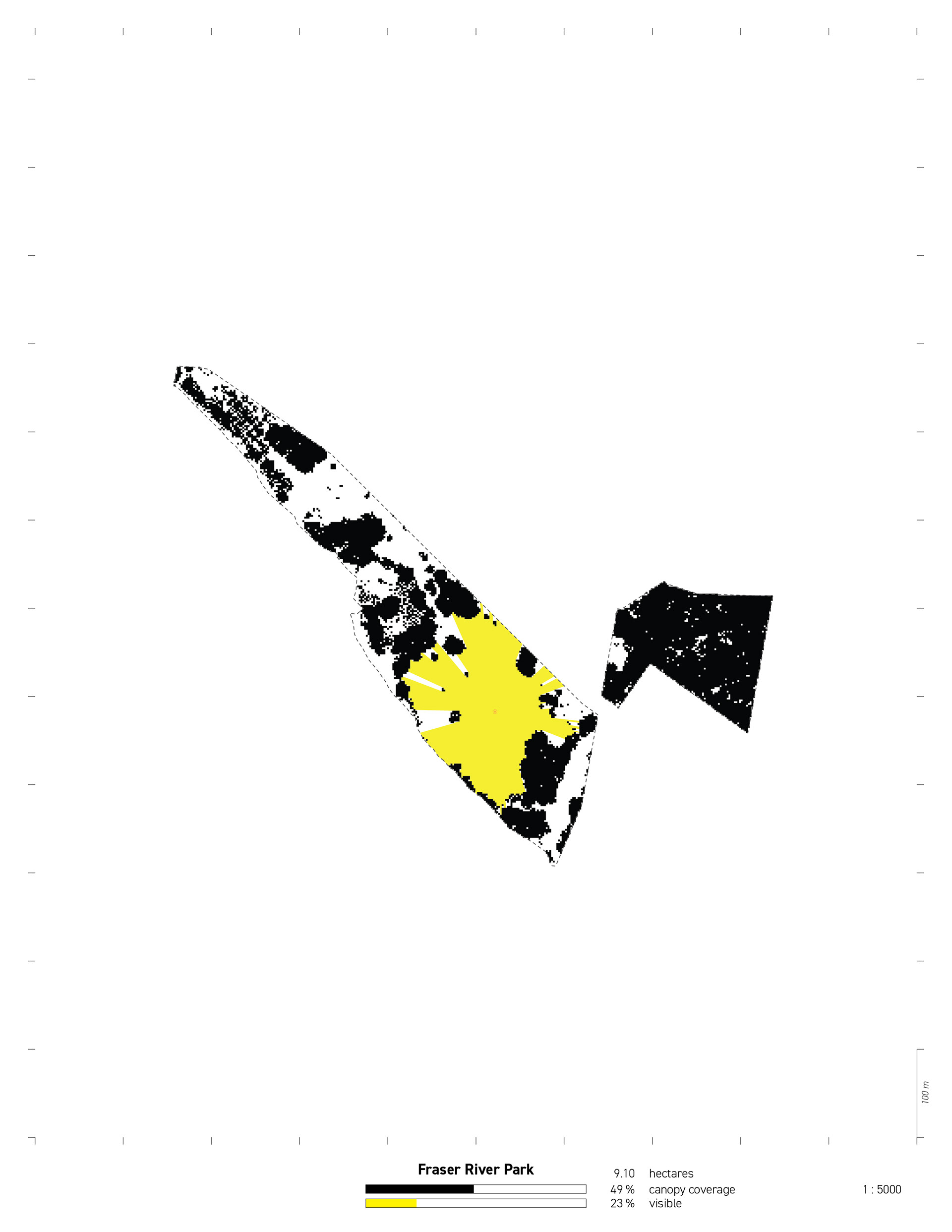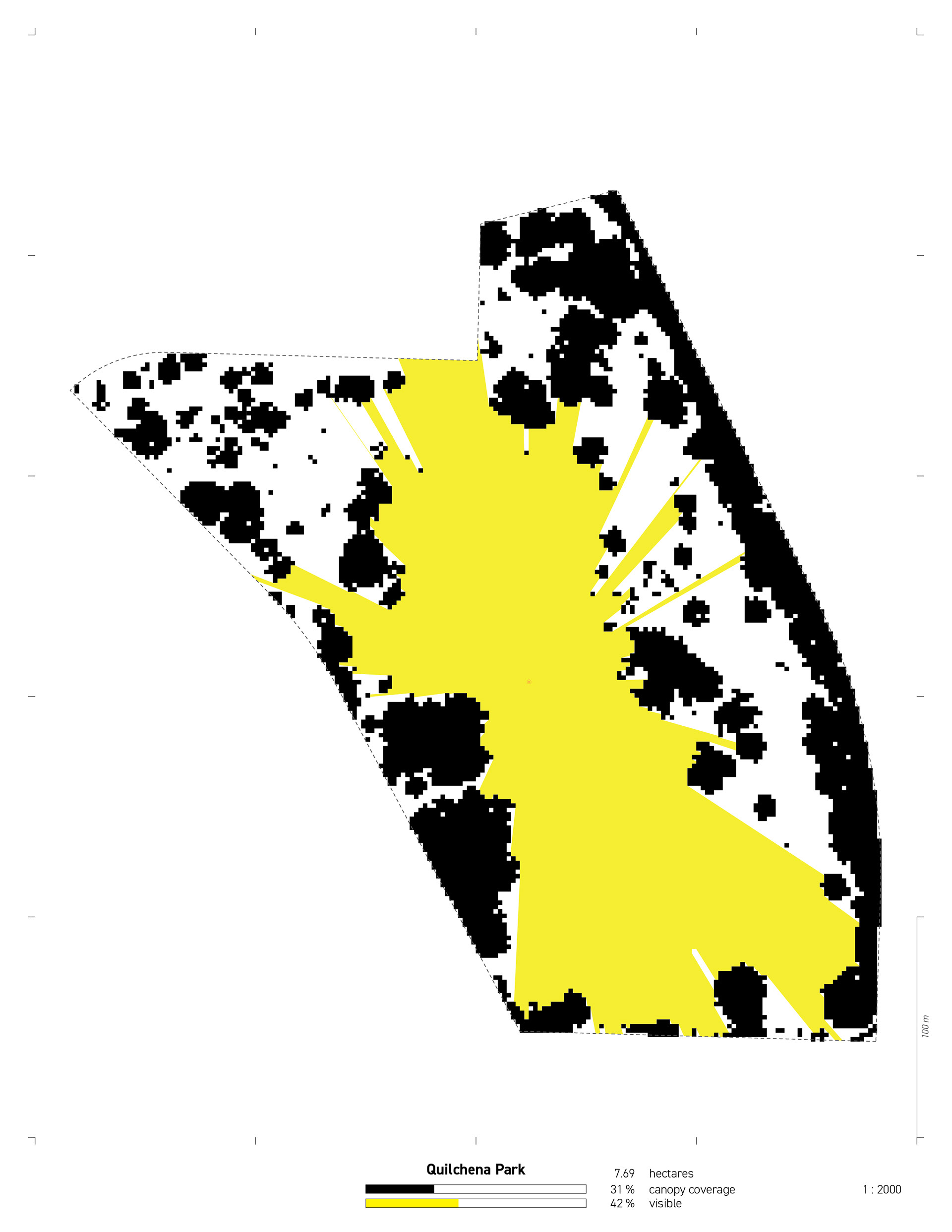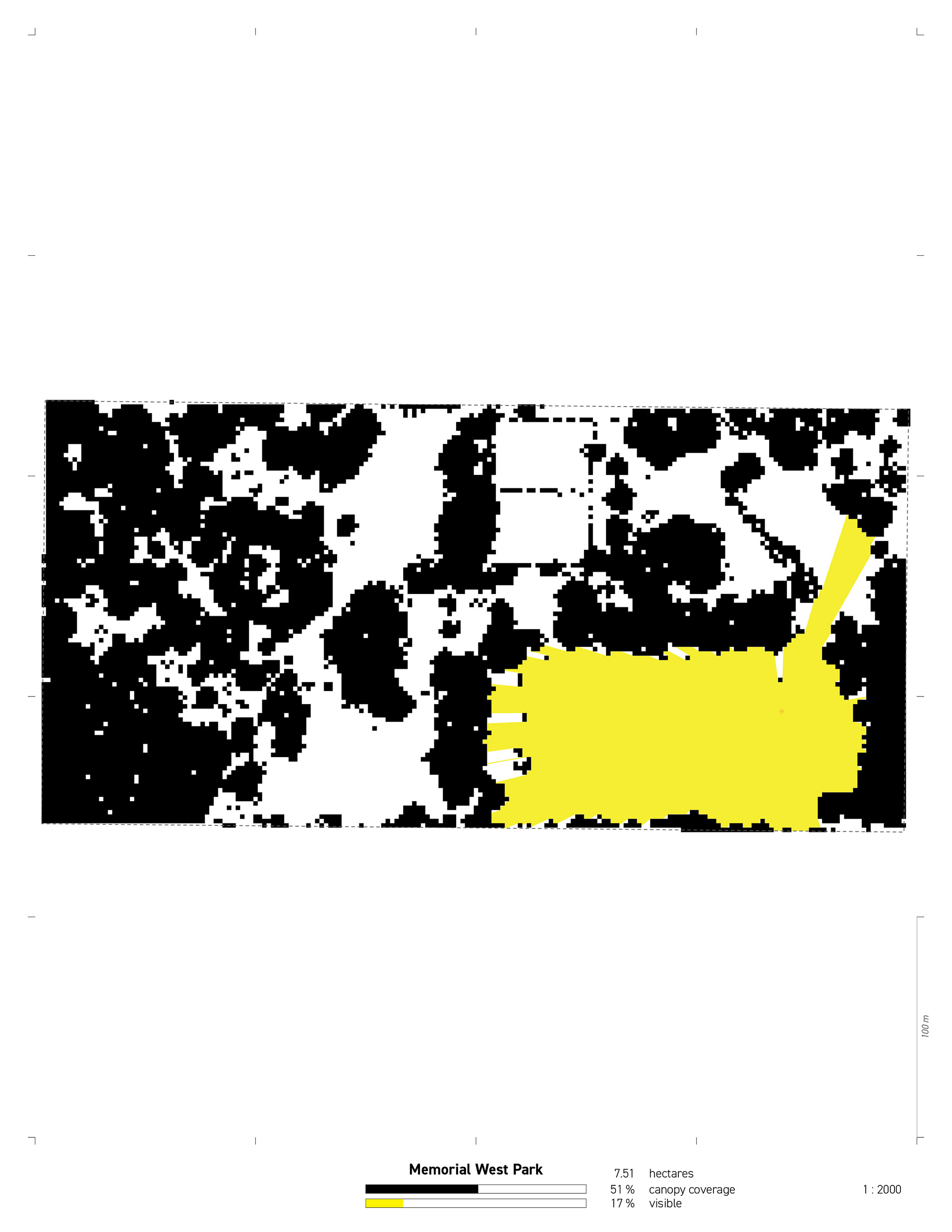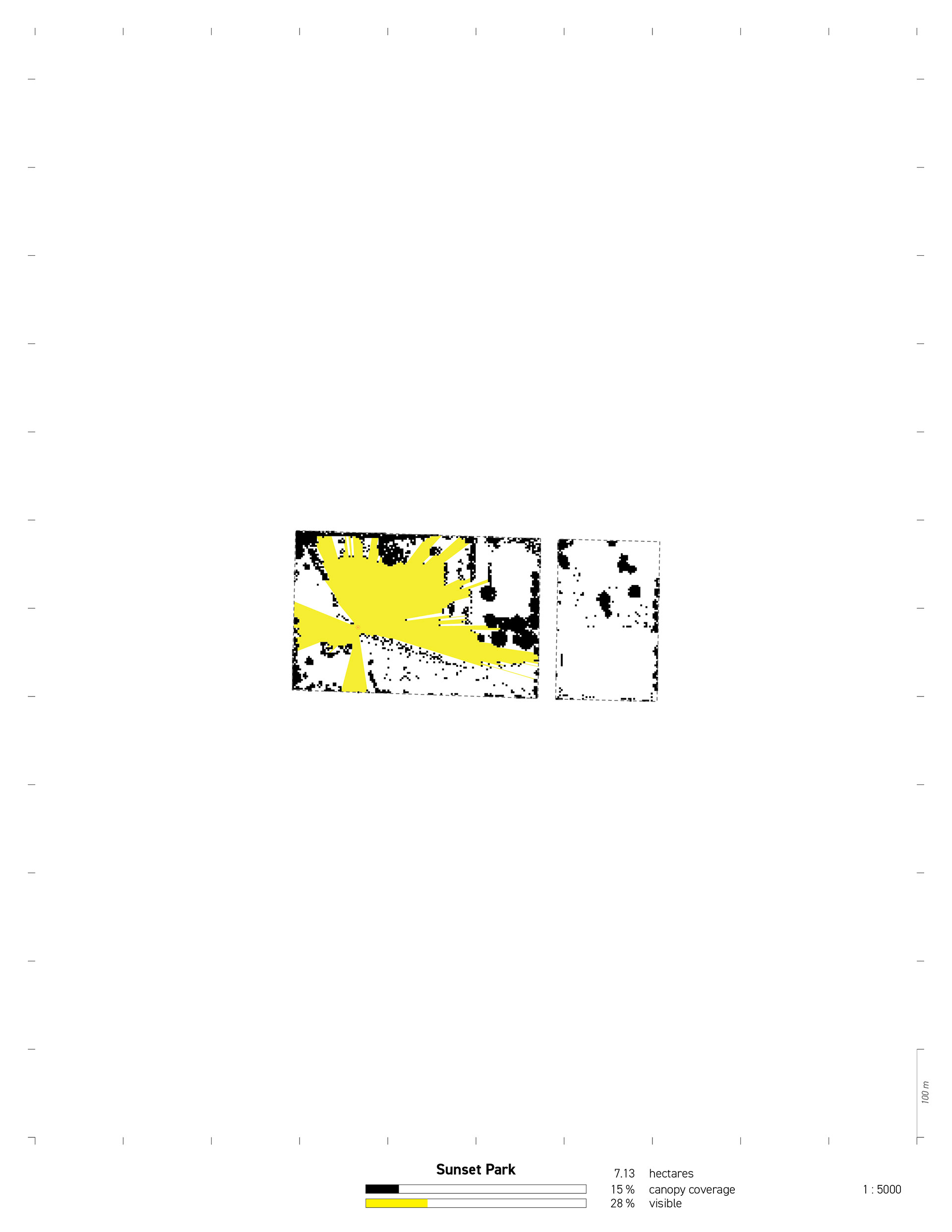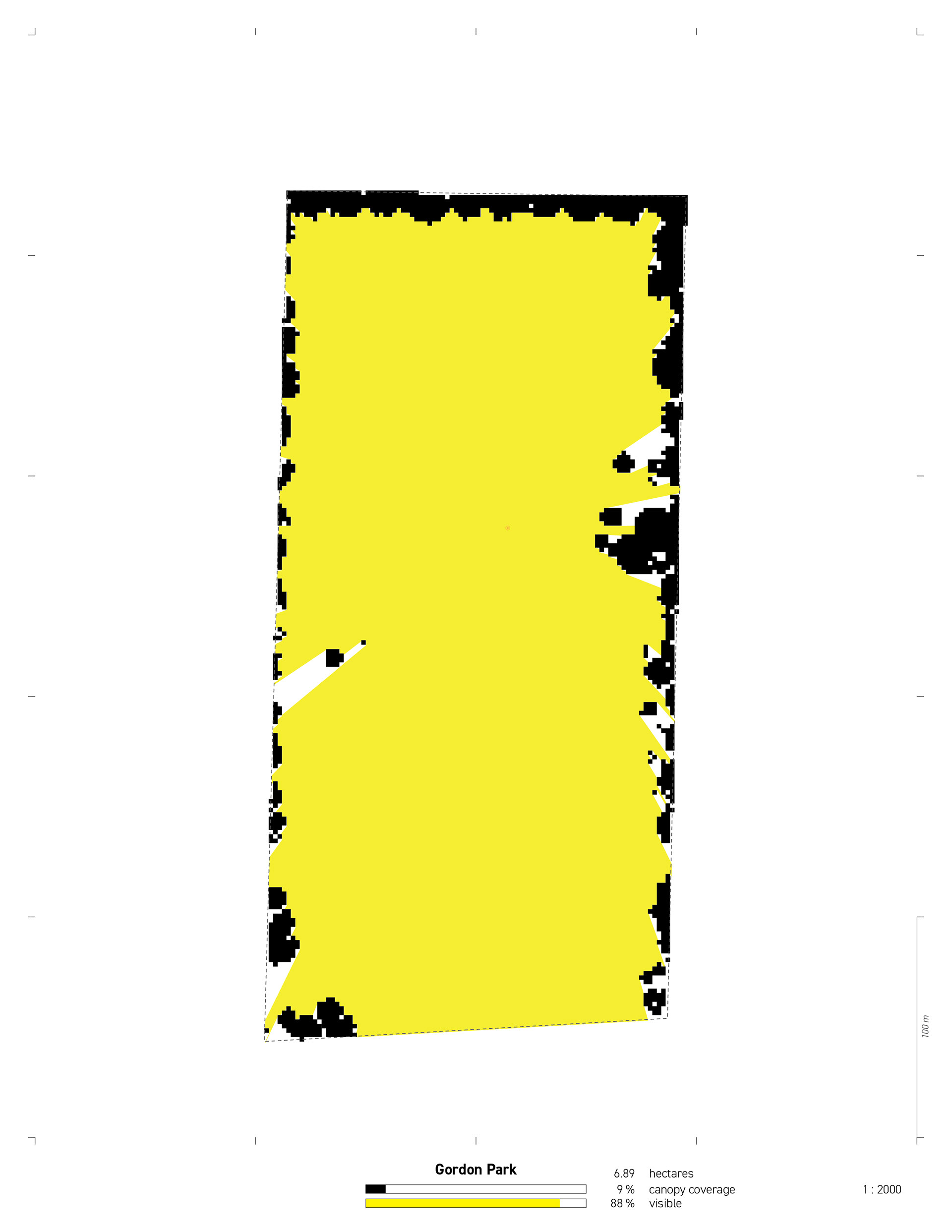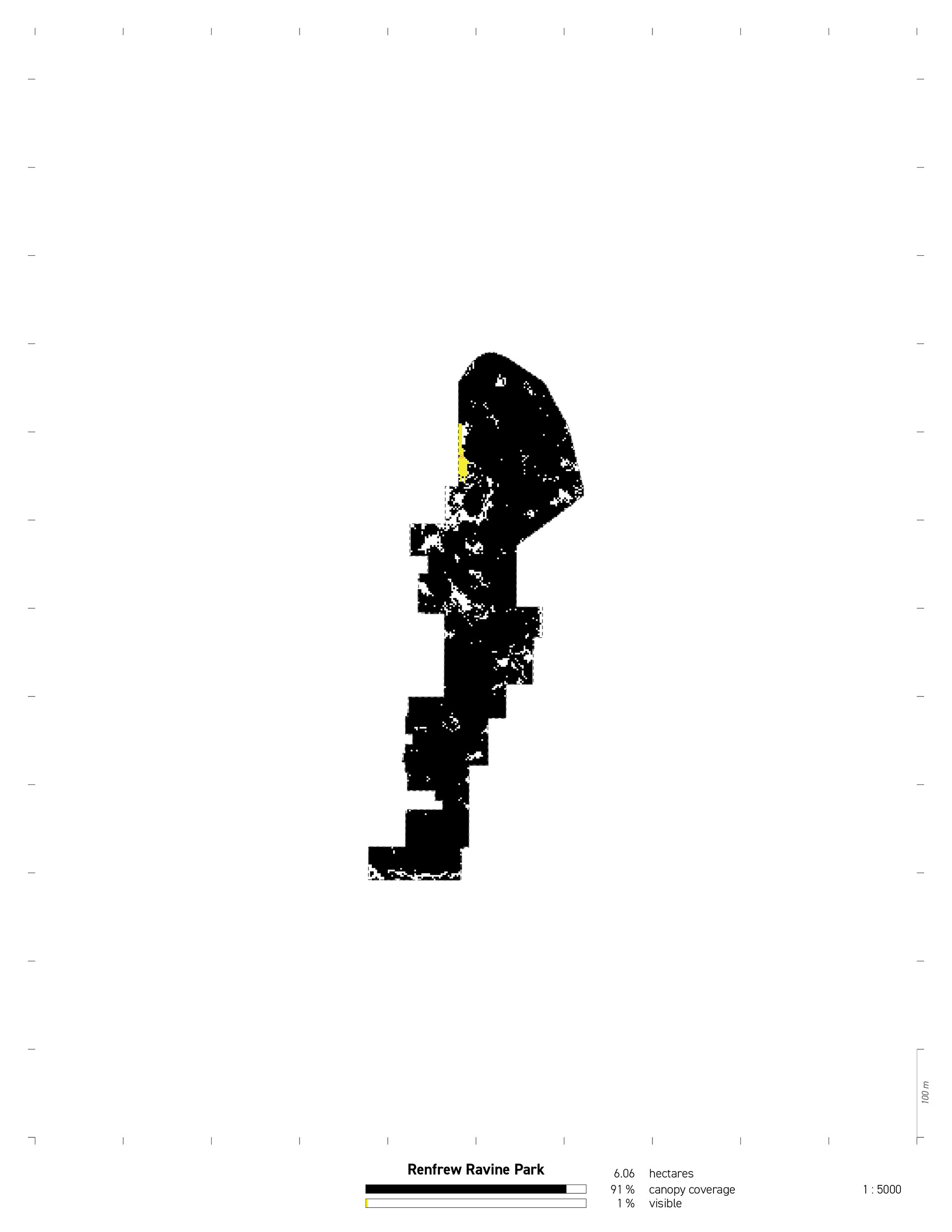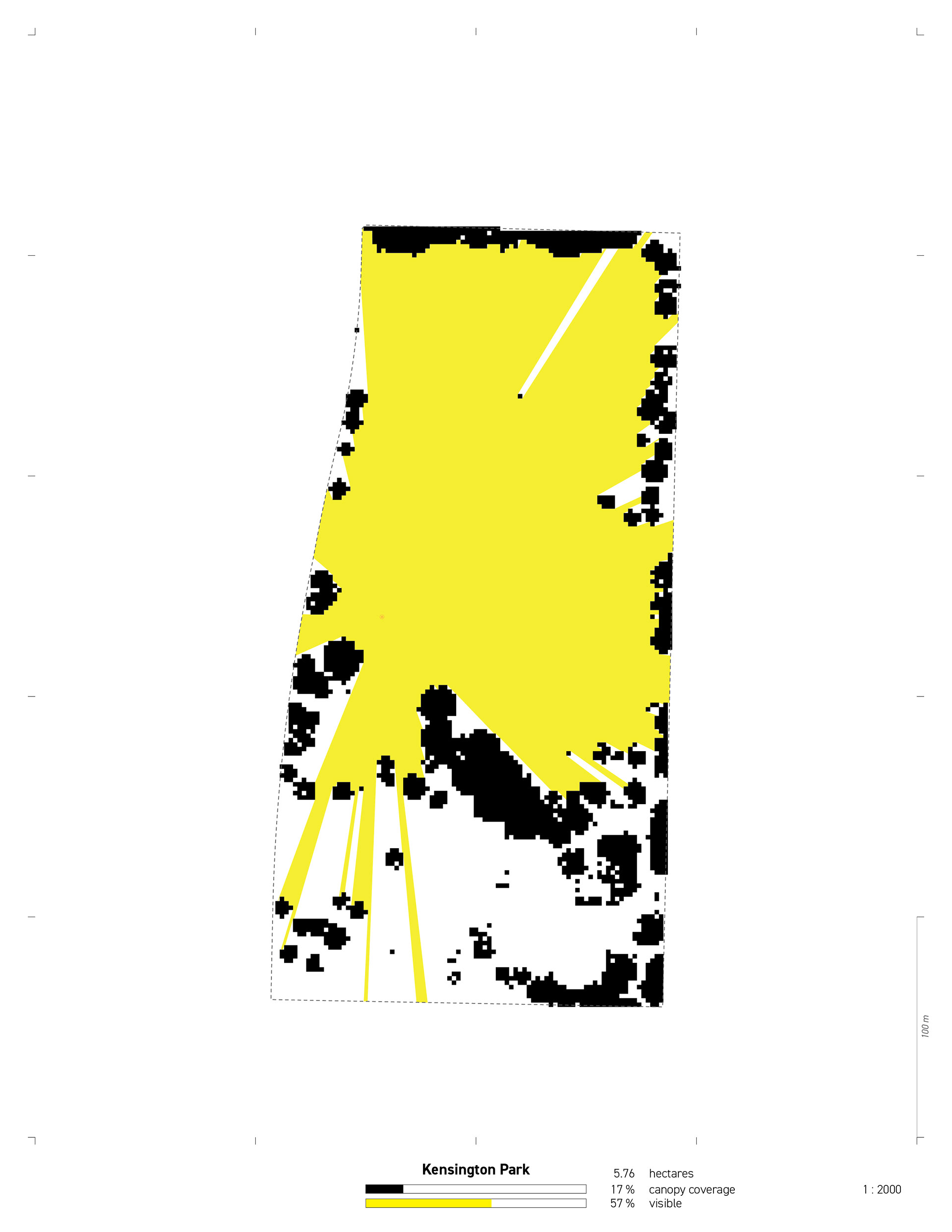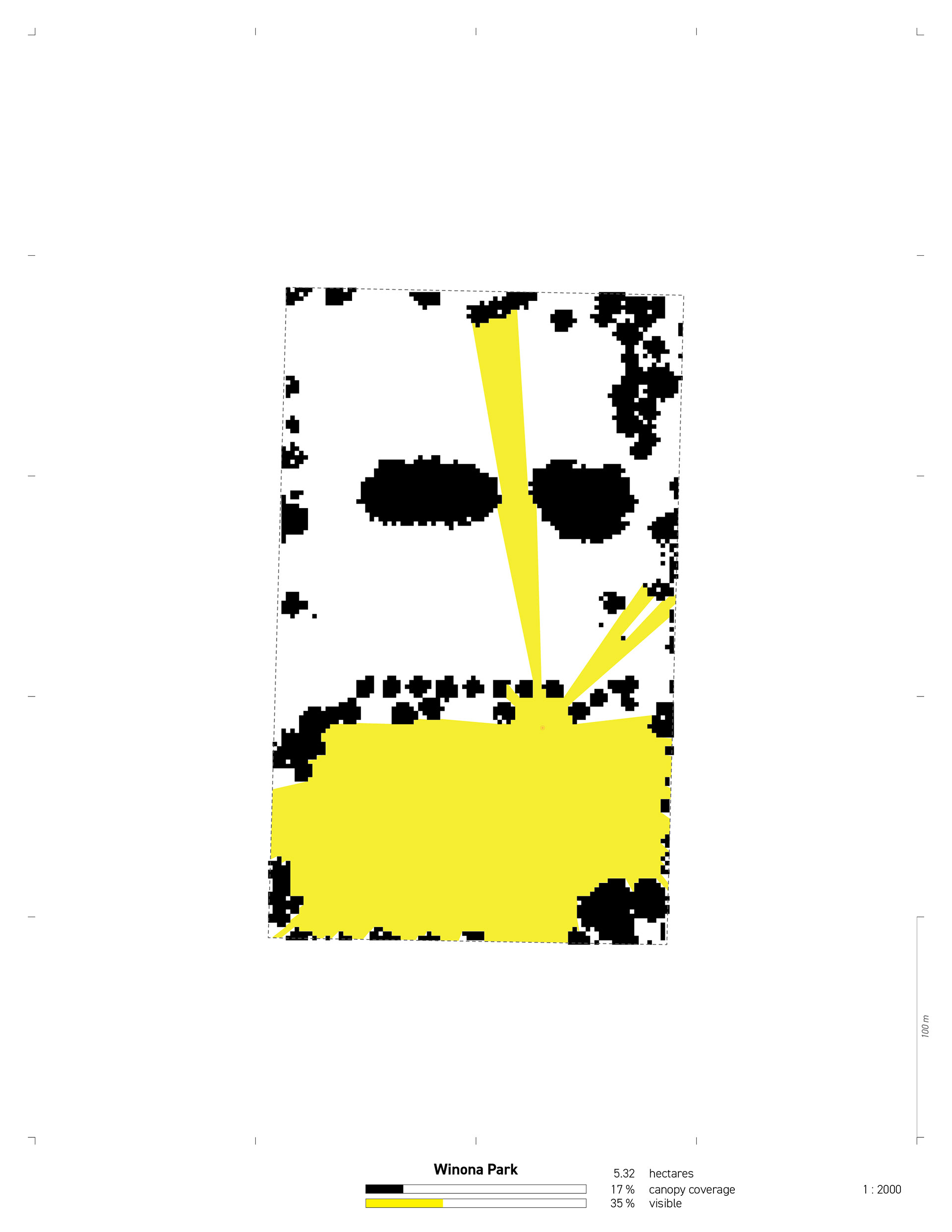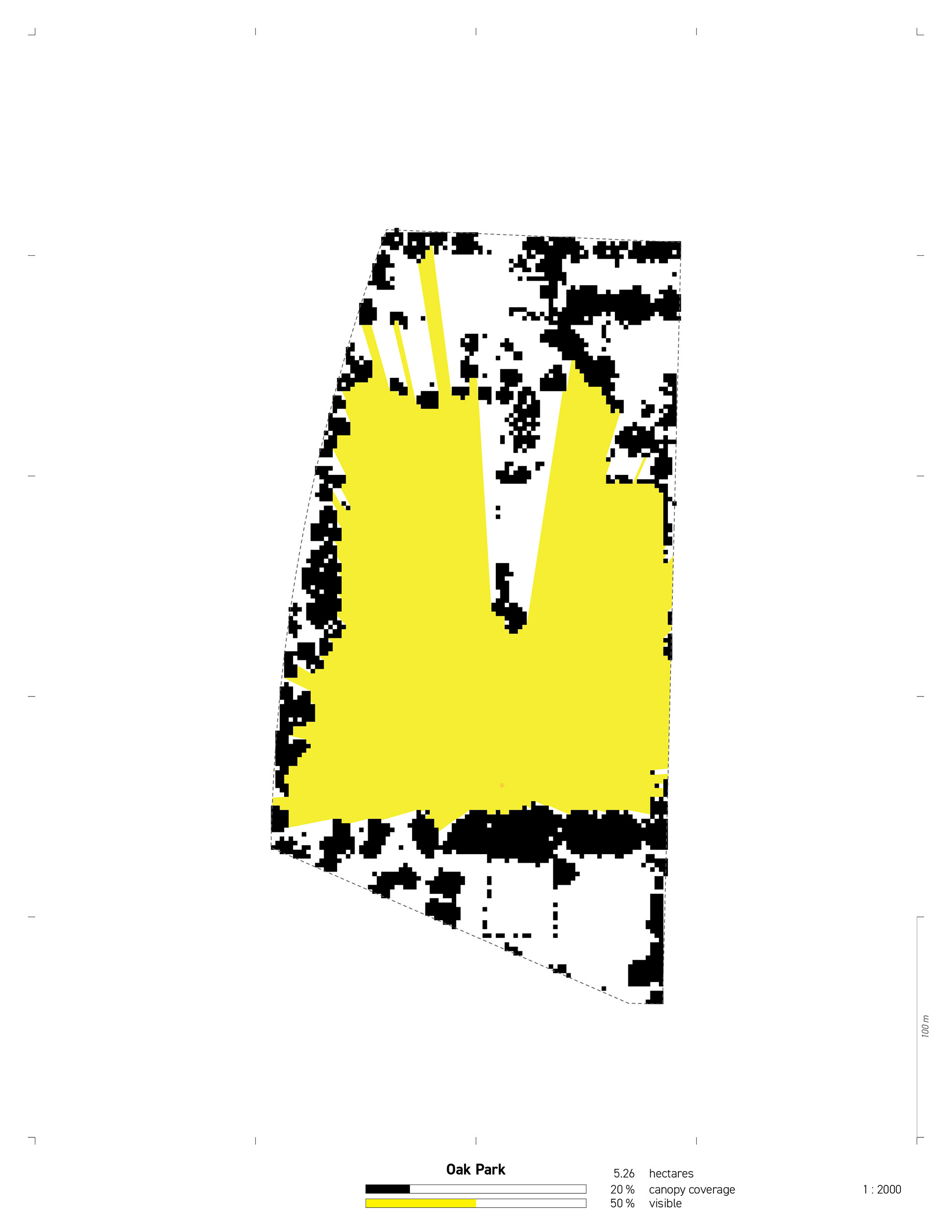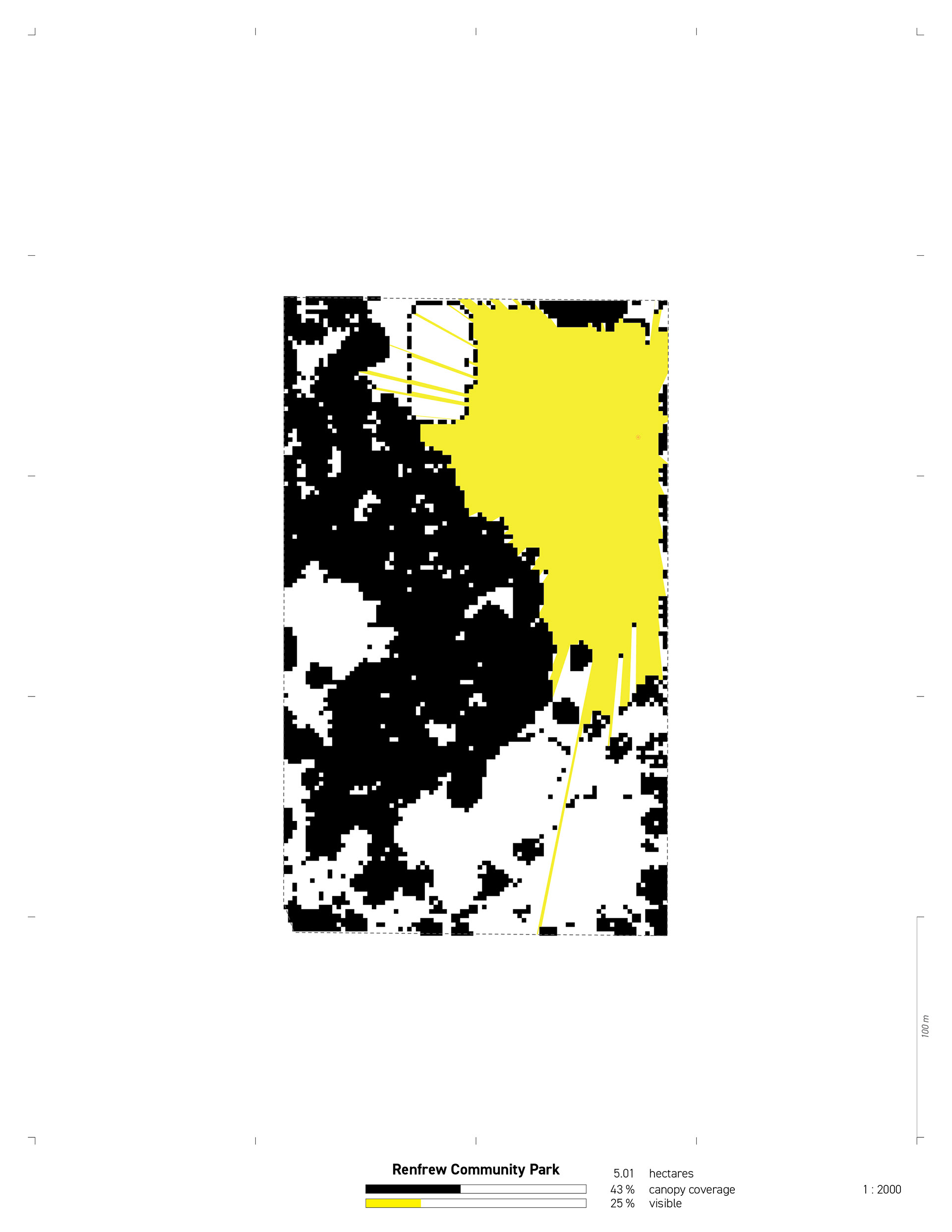Invisible Agora
Vancouver, Canada
The term “open space” describes a park’s physical and political condition interchangeably. As a physical ideal, openness purports to create empty space within an urban fabric, facilitating airflow and sunlight penetration. As a political ideal, openness describes a universally accessible site without barriers. This research draws attention to the ambiguity in the term “open space” and argues that the physical property of openness is not coterminous with a political ideology of openness. Correspondingly, this research develops a method to assess patterns of canopy coverage in the parks of a mid-sized North American city to evidence consistency in spatial distributions of open space. Ultimately, this research suggests that “closed space” may have advantages in supporting democratic engagement and empowering oppressed groups.
Georeferenced point-cloud vegetation data was simplified to generate a binary data set (open versus closed), itself used to determine the most visible point within a park and subsequently calculate the area visible from that location. Despite limitations, such as negating topography, this method yields a comparative spatial syntax of open space and canopy coverage, irrespective of a park’s scale or shape. Findings suggest that urban parks often share a spatial-ecological configuration characterized by a central space, open to above and ringed by a peripheral canopy. This definition matches Frederick Law Olmsted’s characterization of open space (Sutton, 1971), suggesting enduring consistency in the formal organization of canopy coverage in public parks.

